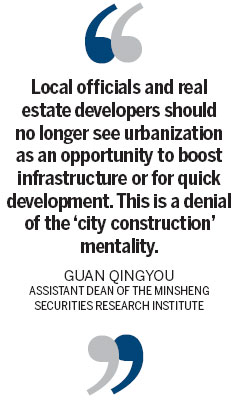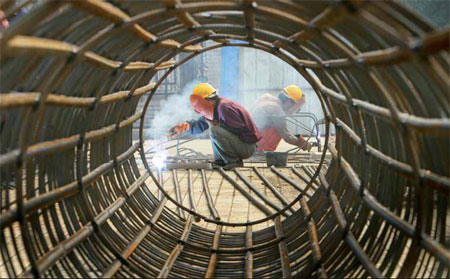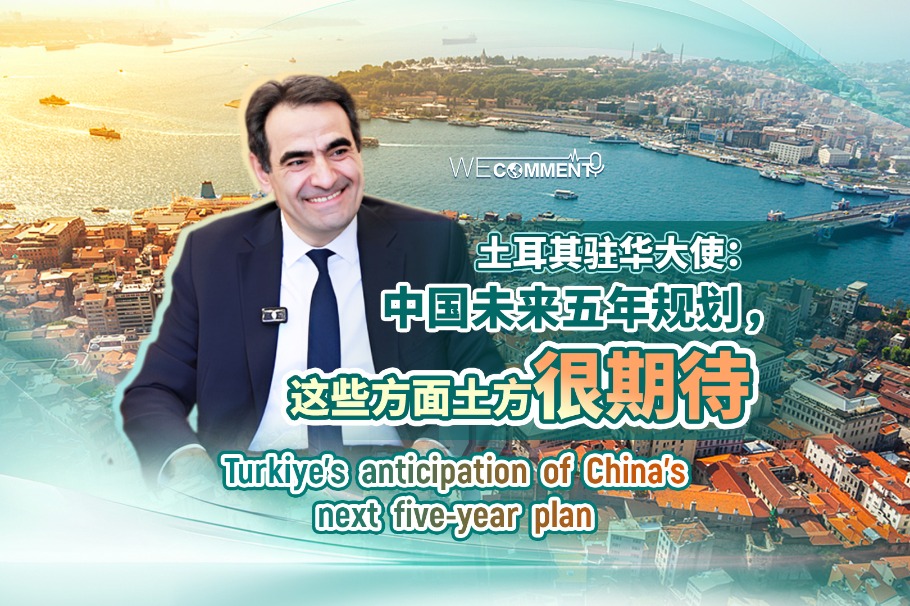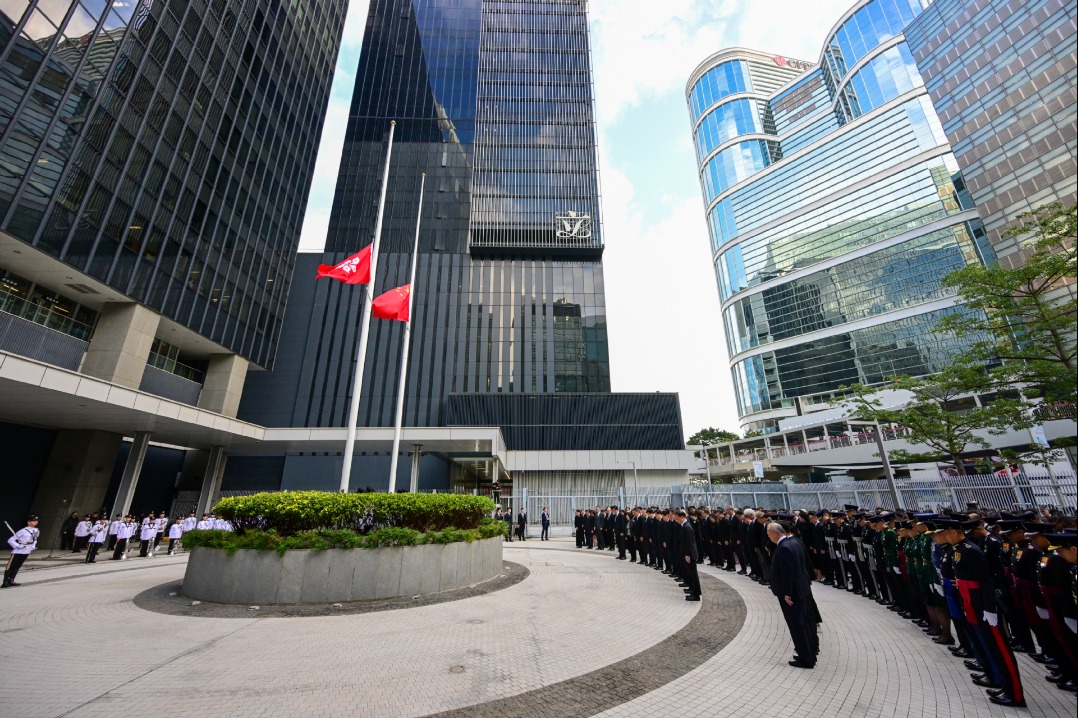Looking for the right impetus

Urbanization should be qualitative, rather than quantitative, say experts
Urbanization is still an integral element of China's growth agenda and policymakers should strive to push for steady, gradual results, rather than quick solutions, experts say.
Two key meetings in 2013 have dispelled much of the doubts about the direction of urbanization in China and the approach of policymakers toward the emerging engine for economic growth.
During the Third Plenum of the 18th Central Committee of the Communist Party of China in November, policymakers fired the first salvo by indicating that they would reform the existing household registration (hukou) system and ease the rules for small and medium-sized cities. Policymakers also said they would cap the population flows to big cities.
The Central Urbanization Work Conference held last month had a more detailed plan for urbanization. Urbanization is a natural and historical process, and the targets should be practical and realistic, it said. Officials should not pursue quick results, but instead push forward urbanization in an "active and steady manner".
Guan Qingyou, assistant dean of the Minsheng Securities Research Institute, says that policymakers have clearly indicated that urbanization needs to be more qualitative, than quantitative.
"Local officials and real estate developers should no longer see urbanization as an opportunity to boost infrastructure or for quick development. This is a denial of the 'city construction' mentality," he says.

Premier Li Keqiang, who has championed the strategy since 2012, had earlier stressed on several occasions that "urbanization" is China's "biggest domestic demand" in the future, as the country seeks to shift its economy away from investment and exports-led to one driven by domestic consumption.
But last year Li indicated that China should also "manage the pace and quality" of urbanization. Along with population migration, industries should also be helped to create enough jobs, the premier said. He added that the focus should be on creating ecologically friendly and energy-efficient industries.
Experts say Li's statements were a reminder to local officials not to rush in with big-ticket infrastructure or property projects in the name of urbanization.
That caution has since found its way into the December document on urbanization. Besides routine discussion of the economic dimension of the urbanization, the 3,000-word document has a considerable section devoted to social, environmental and city planning. For instance, the document urges efficient use of urban land, increasing population density in built-up areas, raising energy efficiency, and reducing energy and carbon dioxide intensity.
Hu Cunzhi, vice-minister of land and resources, says the built-up areas of China's cities have expanded drastically by 83.4 percent between 2000 and 2010, while the decade witnessed 45 percent growth in urban population.
Even more startling was the stipulation that city planning should integrate nature into the urban landscape to the extent that city residents should be able to "see the mountains, watch the water and remember their nostalgia" - poetic language rarely seen in official documents.
"Cultural heritage should be preserved in the urbanization process when redeveloping the villages, be cautious in chopping trees. Don't fill up lakes and avoid tearing down houses," the urbanization document stated.
Though urbanization is a sophisticated project that involves various aspects, as shown in the document, the biggest challenge for policymakers is to make the program "human-centric" - in other words, transforming the country's 333 million migrant population into full citizens.
Measured by the number of people who work in cities, China's urbanization rate reached 52.6 percent by 2012. About 260 million rural migrant workers and another 73 million citizens from other cities do not hold local hu-kou. This prevents them from accessing various social entitlements such as social security, public housing and education. This in turn has prevented them from spending freely.
In the decision following the Third Plenum, Party leaders said they would incrementally integrate migrant workers into cities: fully remove hukou restrictions in towns and small cities, gradually ease them in mid-sized cities; and set clear conditions for migrants to settle in big cities, while strictly controlling the population in mega-cities.
Resettlement costs will be another major factor for policymakers as they deal with the urbanization problem, experts say.
According to a report published by the Development Research Center of the State Council, it costs roughly 80,000 yuan ($13,100; 9,584 euros) to make a migrant worker eligible for social benefit. Under the current fiscal system, local governments have no real incentive to do this.
A possible solution, provided in the Third Plenum announcement, is to set up a mechanism that links fiscal transfer payments from the central government with the pace at which farmers become urban residents: the more the city absorbs migrant workers, the more money they could receive from the central government, which possibly could provide the impetus for local governments. The proposal was mentioned in the December document.
To finance massive infrastructure projects, the Third Plenum also encouraged local governments to broaden financing "through various ways", such as bond issues.
However, there is still a difference of opinion on whether to rely more on large cities or medium to small-sized cities.
Some support the central government's favored policy exerting "strict control" over the growth of China's largest cities, citing growing problems in large cities, such as traffic jams, pollution and slums.
But many economists argue that restricting the size of mega-cities goes against the principles of economics.
"Mega-cities are where the money flows, people flow and business flows converge. They are where the productivity is," says Li Jian'ge, vice-chairman of Central Huijin Investment Co Ltd, a state-owned investment company. "China now has 127 cities with a population of more than 1 million. Based on China's total population, this is not too many, but too few."
He suggests China not follow the traditional path of emphasizing small cities and towns, but should divert attention to large cities with a population of more than 1 million.
Yukon Huang, a senior associate at the Carnegie Endowment, a foreign-policy think tank, also says he disagrees with the notion that governments control cities on the basis of size.
"This is the only point I could not agree with from the Third Plenum. Large cities are where quality growth and high value-added service are. Discouraging large cities is discouraging high-value services," he says.
zhengyangpeng@chinadaily.com.cn
| Workers at a construction site in Nanjing, Jiangsu province. The biggest challenge for policymakers is to make urbanization "human-centric". Provided to China Daily |
(China Daily European Weekly 01/03/2014 page8)
Today's Top News
- Takaichi must stop rubbing salt in wounds, retract Taiwan remarks
- Millions vie for civil service jobs
- Chinese landmark trade corridor handles over 5m TEUs
- China holds first national civil service exam since raising eligibility age cap
- Xi's article on CPC self-reform to be published
- Xi stresses improving long-term mechanisms for cyberspace governance































